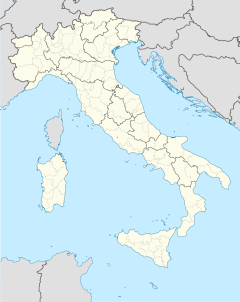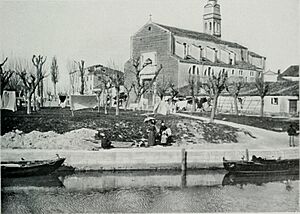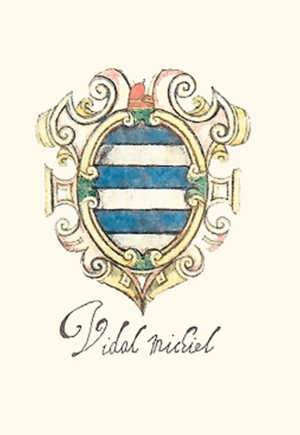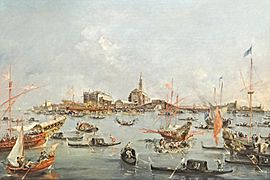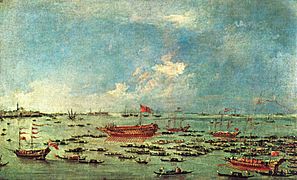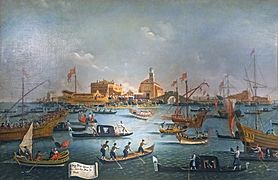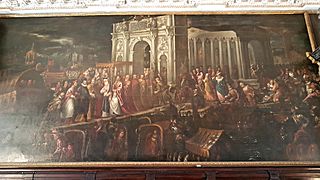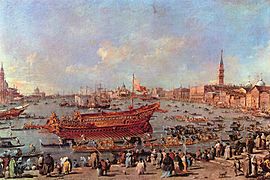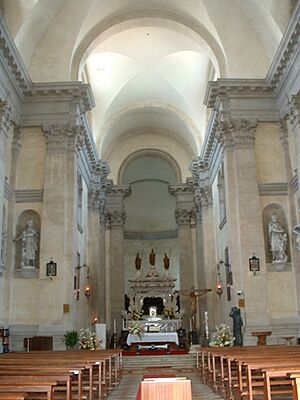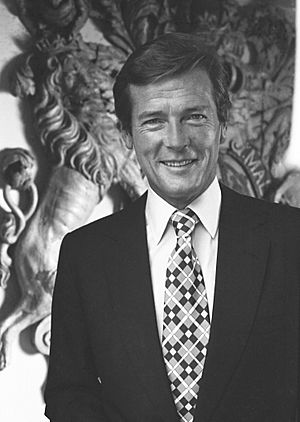Monastery of San Nicolò al Lido facts for kids
Quick facts for kids Monastery of Saint Nicholas(San Nicolò al Lido) |
|
|---|---|
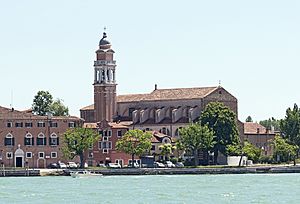
San Nicolò al Lido
|
|
| Religion | |
| Affiliation | Roman Catholic |
| Province | Venice |
| Status | Active |
| Location | |
| Location | Riviera San Nicolò 26 30126 Lido di Venezia, Venice, Italy |
| Architecture | |
| Architectural type | Church |
The Monastery of San Nicolò al Lido is a famous religious place in Venice, Italy. It includes both the San Nicolò Church and its connected monastery. These buildings are on the northern part of the Lido di Venezia, an island near Venice. They are special because they are said to hold some bones (relics) of Saint Nicholas, who is known as the patron saint of sailors.
Every year, a special event called the Sposalizio del Mare (which means "Marriage of the Sea") is celebrated from this church. It's a traditional thanksgiving Mass. Today, the complex is home to monks from the Franciscan order.
Contents
History of the Monastery
The monastery and church of San Nicolò are very old. They were built when Venice was just starting, in the early Middle Ages. Legend says the Zancaruol family founded them. This spot was very important for Venice because it was at the main entrance to the sea.
Early Expeditions
From here, Venetian ships sailed out in 996 and 998 to fight against pirates called Narentines. On May 9, 1000, a large fleet led by the Doge Pietro Orseolo II left this port. They went on a journey that helped Venice take control of Dalmatia. This important event is still remembered today with the Marriage of the Sea ceremony.
Important Events and People
In 1071, Doge Domenico Selvo was chosen and crowned in this church. This happened because St Mark's Basilica was being rebuilt at the time. In 1099, Venetian ships joined the First Crusade from this port. They were led by the Bishop of Castello and Giovanni, the son of Doge Vital I Michiel.
The Relics of Saint Nicholas
In 1100, some people from Venice brought what they believed were the bones of Saint Nicholas from Myra in Lycia to this church. However, a few years earlier, in 1089, other parts of the saint's remains had been placed in Bari by Pope Urban II. Saint Nicholas was then declared the protector of the Venetian fleet.
In 1202, the ships for the Fourth Crusade also left from San Nicolò. In 1245, a nobleman named Salinguerra II Torelli was buried here. He was a powerful leader who controlled the city of Ferrara for many years.
In 1623, the relics of Saint Nicholas were moved from the church to the monastery. This was done to make space for a new building. Later, they were placed back under the main altar. The monastery itself was first built in the 11th century. It was later rebuilt in the Renaissance style in the 16th century. After the Benedictine order was closed down in 1770, Franciscan monks reopened the monastery to use it for teaching.
Architecture of the Complex
The church has one main room and is connected to a monastery and a large courtyard called a cloister. All these parts were built in the 16th century. The tall bell tower, called a campanile, was built in the Baroque style between 1626 and 1629.
The front of the church has the tomb of Doge Domenico I Contarini. He was a supporter of the monastery. Inside the church, you can see artworks by famous painters. These include a painting of the Madonna with Child by Palma il Vecchio and San Giovannino by Palma il Giovane. The three bells in the campanile are also very old, dating back to the 16th century.
San Nicolò in Art
The Italian painter Francesco Guardi (1712–1793) was a very important artist from the classic Venetian School of Painting. He created many works that show San Nicolò. His painting style, called pittura di tocco (meaning "of touch"), used small dots and lively brushstrokes. This style was later admired by the French Impressionists.
-
'Doge of Venice on the Bucintoro', San Nicolo du Lido during the Marriage of the Sea (c.1775-1780) by Francesco Guardi (1712-1793).
-
The Bucintoro near San Nicolò di Lido (c. 1780–1790) by Francesco Guardi (1712–1793).
-
Francesco Guardi - The Departure of Bucentaur for the Lido on Ascension Day
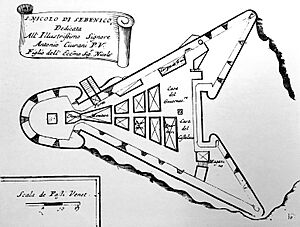
Fortress of San Niccolò
The Fortress of San Niccolo is also known as the Fortress of the Islands of the Lagoon. It was built by the city of Venice in 1591. The French updated it in 1806, and the Austrians changed it again in 1831. In 1856, it became part of a larger defense area called a "redoubt." As of August 2025, this fortress is a military zone and cannot be visited by the public.
The Relics of Saint Nicholas
For a long time, there was a disagreement between Venice and Bari about who had the real bones of Saint Nicholas. In recent years, scientists have looked closely at the bones. They did this in Bari in 1953 and in Venice in 1992.
The studies showed that the bones in both cities actually belong to the same person. Bari has the larger pieces of bone, while Venice has the smaller pieces. It seems the sailors from Bari might have forgotten these smaller fragments when they took the relics. Not many people know about the relics in Venice, so the church is not a major pilgrimage site like the one in Bari, especially for Russian Orthodox visitors.
San Nicolò in Film and Television
San Nicolò has been a popular place for filming movies and TV shows.
Famous Films
In 1971, the Italian-French drama film Death in Venice was filmed here. It was directed by Luchino Visconti and starred Dirk Bogarde and Björn Andrésen. The movie was based on a story by German author Thomas Mann.
The James Bond film series has also used San Nicolò as a location. In 2006, Martin Campbell’s Casino Royale, starring Daniel Craig and Eva Green, filmed scenes here. San Nicolò was also used as the Italian headquarters for MI6 (a spy agency) in Lewis Gilbert’s Moonraker (1979). This film starred Roger Moore and began production in August 1978. While some scenes were set in Venice, parts like the "Venetian glass museum" and a fight scene were actually filmed in a studio in France.
Old Jewish Cemetery
The Old Jewish Cemetery (in Italian, Il vecchio cimitero ebraico) is located very close to San Nicolò. The first graves in this cemetery date back to 1386. At that time, Jewish people in Venice were not yet forced to live in a special area called a ghetto, which was created in 1516. The cemetery was used until around 1640-1650. It was then abandoned because the fortifications of San Nicolò needed to be expanded due to a threat from the Turks.
Venice-Lido Airport
The Venice-Lido Airport is an airport located right next to the Monastery. It is also known as Giovanni Nicelli Airport and was once called Venice-San Nicolò Airport.
Images for kids


